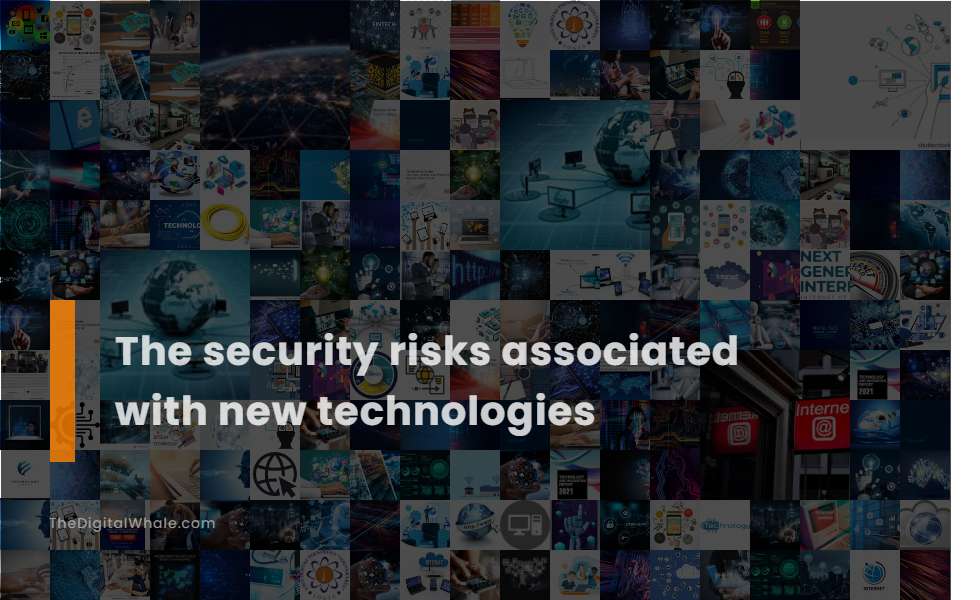The Security Risks Associated with New Technologies
What are some of the security risks associated with technology in today's society? What is the role of cybersecurity in the workplace? Let's find out more about The Security Risks Associated with New Technologies.

Growing attack surface due to emerging technologies
The growing attack surface due to emerging technologies, such as AI, quantum computing, and 5G networks, introduces new vulnerabilities, including expanded device connectivity and increased data transmission. This creates potential breaches in network slicing and virtualization, necessitating advanced cyber resilience strategies. These technologies significantly expand the attack surface by adding more devices and higher data volumes. As described by the World Economic Forum, these changes also introduce new vulnerabilities such as encryption threats and distributed security challenges, underscoring the need for robust cybersecurity measures.
AI's risk and reward profile, including data poisoning and model manipulation
AI data poisoning poses significant security risks by manipulating training data to skew AI model behavior. This can lead to incorrect or dangerous decisions in critical areas like healthcare, finance, and security. Moreover, data poisoning can amplify existing biases and create vulnerabilities for further adversarial attacks. For a deeper exploration of this topic, visit the Innovation Hub on HiddenLayer's website.
Quantum computing threats to encryption
Quantum computing poses a significant threat to current encryption methods, particularly asymmetric encryption, due to its potential to break traditional cryptographic algorithms using quantum algorithms like Shor's algorithm. This necessitates a transition to Post-Quantum Cryptography (PQC), a process expected to be long and costly, with immediate risks including "harvest now, decrypt later" attacks where attackers store encrypted data to decrypt later with powerful quantum computers.
Vulnerabilities in Internet of Things (IoT) devices
The security risks associated with IoT devices include data privacy breaches, device hijacking, denial-of-service attacks, man-in-the-middle attacks, firmware vulnerabilities, supply chain attacks, and physical security risks. These challenges underscore the need for robust cybersecurity measures to protect sensitive data and prevent unauthorized access. For more detailed information on these threats and how to address them, visit the comprehensive guide on IoT Risks, which provides valuable insights into safeguarding these devices effectively.
Cryptojacking and its impact on computational resources
Cryptojacking poses significant security risks by hijacking computational resources to mine cryptocurrencies. This not only causes slower device performance and increased wear and tear on hardware but can also lead to potential financial losses due to elevated electricity and cloud costs. All of these issues occur without the user's knowledge or consent. For more detailed information on the implications and preventive measures, you can explore the insights provided by Cisco's Security Blog.
Related:
What will be the future of well-being in a tech-saturated world? What is the future of work in the developing world? Let's find out more about The Future of Work In A Technologically-Driven World.
Mobile cyber threats and increased risk of data breaches
Mobile devices face significant security risks, including data leakage from risky apps, unsecured Wi-Fi, network spoofing, phishing attacks, spyware, and broken cryptography, all of which can lead to data breaches and the exposure of sensitive personal and corporate data. As highlighted by Kaspersky, these threats pose serious challenges to maintaining the integrity and confidentiality of information stored on smart devices. Additionally, the vulnerability of mobile devices to threats such as spyware, malware, and data breaches can result in the loss of personal privacy, surveillance, and the exploitation of sensitive information like banking details and medical records. This digital dilemma emphasizes the need for robust mobile security solutions to safeguard against potential threats and protect valuable data.
Botnets and their use in malicious activities
Botnets pose significant security risks by enabling malicious actors to launch coordinated attacks such as DDoS, mass email spam, targeted intrusions, and financial breaches, using networks of hijacked devices infected with malware, often without the owners' knowledge. For more detailed information on how botnets function and their impact on cybersecurity, you can visit the SentinelOne website which provides comprehensive insights into threat intelligence.
Drive-by download attacks and unauthorized malware installation
Drive-by download attacks and unauthorized malware installations pose significant security risks by exploiting website vulnerabilities, browser flaws, and user interactions to download and install malicious software, potentially leading to data theft, system instability, and malware infections without the user's knowledge or consent. To combat these threats, comprehensive solutions like those discussed on BlackBerry's Drive-By Download Attack Protection Page are essential in ensuring endpoint security. By understanding the methods and preventive measures associated with these threats, users can better safeguard their systems against potential cyber attacks.
Advanced persistent threat (APT) attacks for long-term data theft
Advanced Persistent Threats (APTs) pose significant security risks due to their stealthy and prolonged nature, often sponsored by nation-states or large criminal organizations. These threats aim to steal sensitive data, conduct cyber espionage, and sabotage organizations over an extended period while remaining undetected. For more detailed information on such threats, you can visit the Advanced Persistent Threat reference page provided by Proofpoint.
Malvertising and its role in injecting malicious code into legitimate websites
Malvertising attacks involve malicious code embedded in advertisements on legitimate websites, which can execute without user interaction, leading to fake anti-virus scans, malware installation, and other malicious activities aimed at gaining control of the user's device. To learn more about these threats, visit the comprehensive resource on Malvertising Attacks which offers further insights and protective measures.
Related:
What are the effects of technology on society? What are some of the benefits of having broadband in your home? Let's find out more about The Role of Technology In Our Increasingly Connected Lives.
